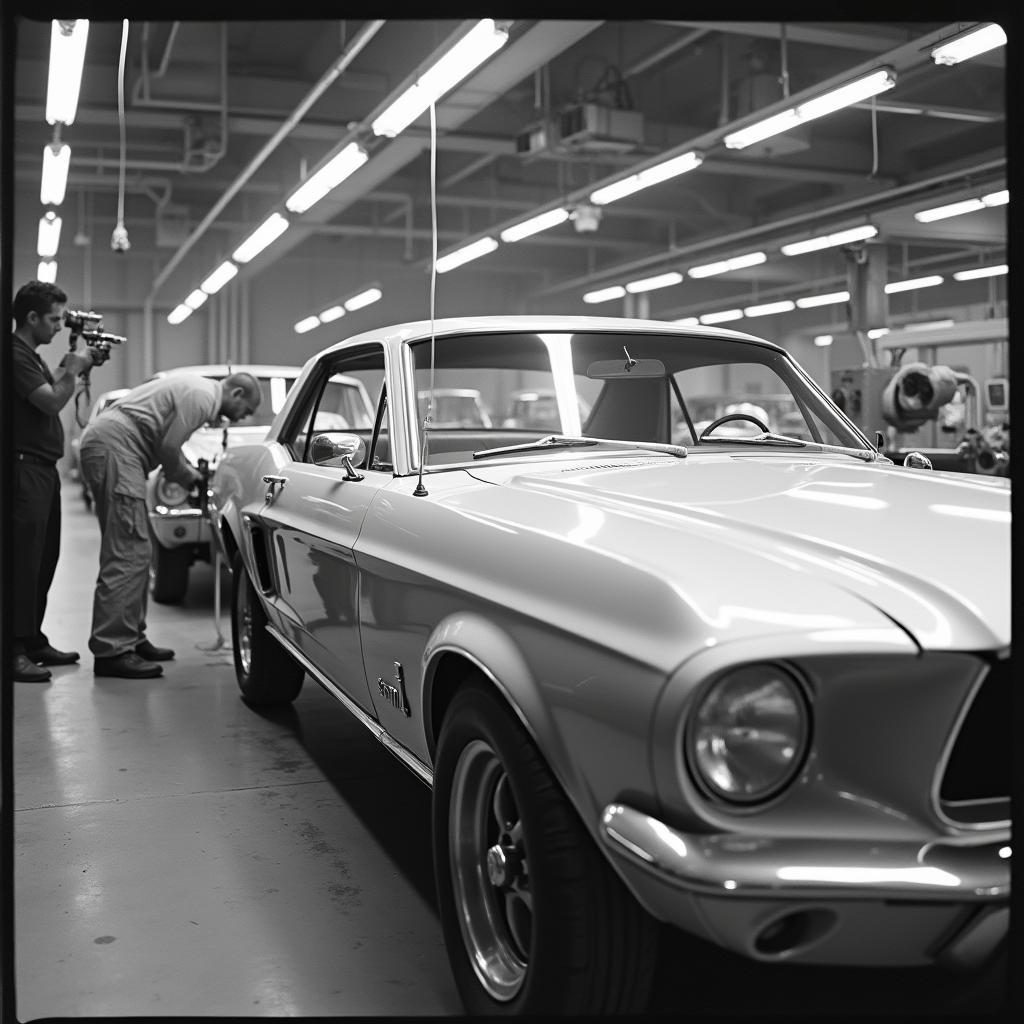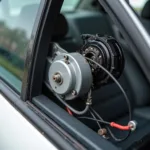Owning a muscle car is a dream come true for many. These powerful machines represent a golden age of automotive design and performance. But preserving their iconic look takes work, especially when it comes to paint and body repair. Whether your prized possession has suffered a fender bender or simply needs a refresh, understanding the intricacies of muscle car paint and body work is crucial.
This guide will equip you with the knowledge to navigate the world of muscle car restoration and ensure your classic looks its best for years to come.
Why Paint and Body Repair Matters for Muscle Cars
Muscle cars are more than just vehicles; they’re rolling pieces of history. Their value goes beyond mere monetary worth, encompassing sentimental value and often, years of meticulous care. That’s why paint and body repair for these vehicles requires a special touch.
Here’s why it’s so important:
- Preservation of Value: A well-maintained exterior is essential for retaining and even enhancing your muscle car’s value.
- Authenticity: Original paint jobs and bodywork hold historical significance. Expert repairs should aim to preserve these elements whenever possible.
- Aesthetics: A flawless paint job and bodywork highlight those iconic muscle car lines, making your vehicle stand out from the crowd.
Decoding Muscle Car Paint: From Factory Finishes to Modern Options
The paint on your muscle car tells a story. Understanding the nuances of different paint types and techniques can help you make informed decisions about your restoration.
Let’s delve into the world of muscle car paint:
Original Factory Finishes: A Blast from the Past
Muscle cars from the 1960s and 1970s often sported vibrant, eye-catching colors. These classic hues were achieved using enamel paints, known for their deep gloss and durability. However, enamel paints require a multi-step application process, including priming, sanding, and polishing, to achieve that showroom shine.
 Muscle Car Factory Paint Line
Muscle Car Factory Paint Line
Modern Paint Technologies: A Spectrum of Choices
Today, advancements in paint technology offer a wider array of options for muscle car enthusiasts. Here are some popular choices:
- Acrylic Urethane: Known for its durability, color retention, and resistance to chips and fading. This type of paint is a popular choice for modern restorations.
- Basecoat/Clearcoat: This system involves applying a base coat of color followed by a clear coat for added depth and protection. It allows for a wider range of color and effect options.
- Water-Based Paints: Environmentally friendly and offering excellent color accuracy, these paints are gaining popularity in the restoration community.
The best paint choice for your muscle car depends on factors such as your budget, desired finish, and the car’s intended use.
Bodywork Basics: Restoring the Metal Canvas
Before that gleaming paint can be applied, the underlying bodywork must be flawless. Muscle car body repair often involves addressing rust, dents, and other imperfections that come with age and use.
Here’s what you need to know:
Rust: The Arch-Nemesis of Metal
Rust is a common issue in older vehicles, especially those exposed to harsh weather conditions.
“Addressing rust early and effectively is paramount,” says John Miller, a veteran muscle car restoration expert with over 30 years of experience. “Ignoring it can lead to significant structural damage and costly repairs down the road.”
Dent and Damage Repair: Metalworking Magic
From minor door dings to more extensive collision damage, muscle cars often bear the battle scars of time. Skilled metalworkers can employ various techniques, including panel beating, welding, and the use of body fillers, to restore your car’s body to its former glory.
Panel Alignment and Gaps: The Mark of Quality
One of the hallmarks of a high-quality restoration is precise panel alignment and consistent gaps. This attention to detail not only enhances the aesthetics but also ensures proper door closure, weather sealing, and overall structural integrity.
Choosing the Right Professionals for Your Muscle Car
Entrusting your prized muscle car to just anyone for paint and body work is simply not an option. You need experienced professionals who understand the unique challenges and intricacies of restoring these classic vehicles.
Here are some key factors to consider when choosing a shop:
- Experience: Look for a shop with a proven track record in muscle car restoration.
- Expertise: Ensure the team includes skilled metalworkers, painters, and technicians familiar with classic car techniques and materials.
- Reputation: Read online reviews, ask for referrals, and check the shop’s portfolio to gauge their reputation.
- Communication: Choose a shop that communicates clearly throughout the process, providing updates and addressing your concerns.
Conclusion: Keeping the Legend Alive
Paint and body repair are essential aspects of preserving the legacy of your muscle car. By understanding the intricacies involved and choosing the right professionals, you can ensure that your classic continues to turn heads and ignite passion for generations to come.
Remember, a well-maintained muscle car is not just a vehicle; it’s a testament to automotive history and a source of pride for its owner.


